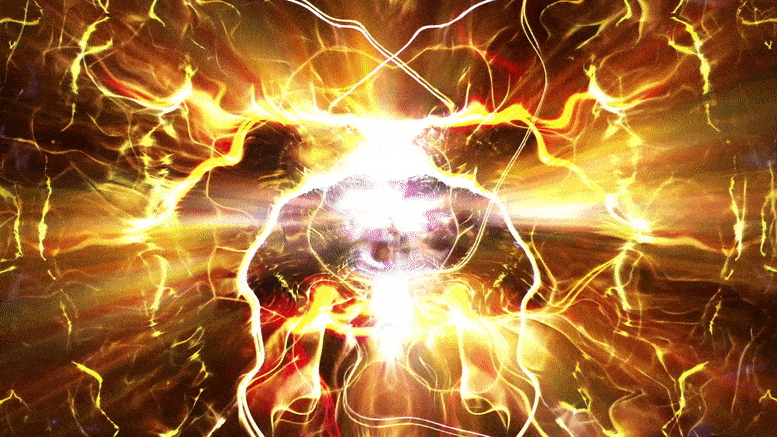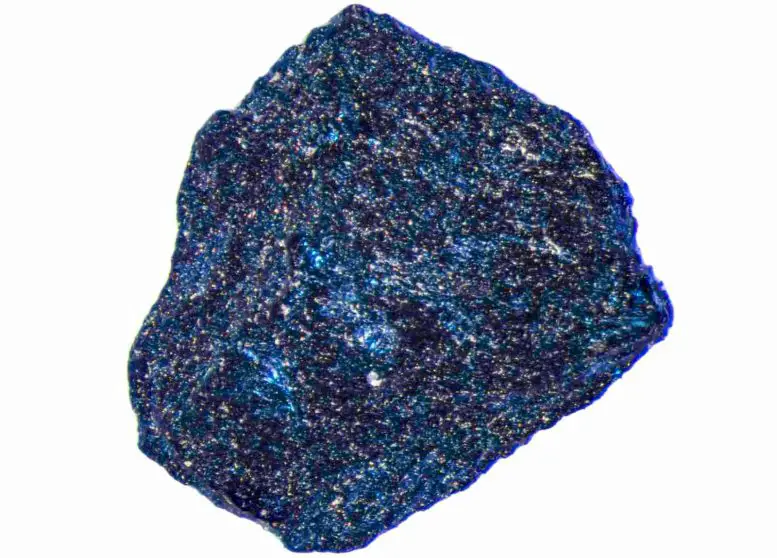Researchers have figured out a way to make materials superconductive at lower temperatures and pressures.
A team of researchers from the University of Rochester recently achieved an amazing milestone – creating materials that can act as superconductors but require less heat and pressure than before to function properly.
A team led by Professor Ranga Dias has created something new – a material called nitrogen-doped lutetium hydride. This material can become a type of superconductor when it’s exposed to temperatures of 69 degrees Fahrenheit and pressure of 10 kilobars (145,000 pounds per square inch). And with this discovery, scientists see the potential to make new technologies!
145,000 psi can sound really high (the pressure at sea level is around 15 psi). But in chip making, scientists use methods that let them work with materials joined together by even stronger internal pressures.
And using specialized techniques, researchers were actually able to reach that same superconductivity state at higher temperatures and lower pressures.

The groundbreaking substance is composed of a mix of rare-earth elements, allowing it to hold its properties at temperatures and pressures that are far lower than was previously thought possible. This opens up new possibilities for the development of efficient energy sources, such as more efficient methods of storing energy and utilizing renewable resources.
The implications of this discovery are far-reaching, and the possibilities for its use are endless. From powering the most sophisticated of devices to revolutionizing the way we use energy, the potential for this new superconducting substance is nothing short of revolutionary.
The scientists at the University of Rochester have made a momentous accomplishment that could change the way we look at energy production and consumption. Their breakthrough has the potential to revolutionize the way we use energy and power our lives, and their efforts should be commended for their dedication and hard work.
Scientists have been searching for a big breakthrough in physics for over a hundred years now. Superconducting materials are special because of two main things: their electric resistance goes away completely and they can stop magnetic fields that come near them. This means these materials can be used to build power grids, where electricity is able to travel without losing energy – something that usually happens when there is too much resistance in the wires. In fact, using superconductors might even save up to 200 million Megawatt hours (MWh) of energy!
- Trains that use magnets to float, move faster, and don’t need friction.
- Cheaper medical equipment to scan the body like MRI (magnetic resonance imaging) and magnetocardiography.
- Computers and memory devices that run more efficiently.
- Machines called Tokamaks that use magnetic forces to generate unlimited energy from atoms.
The Dias team discovered two new materials that can act as superconductors. These materials work at temperatures of 58 degrees Fahrenheit and pressures of 39 million Psi and 12 degrees Fahrenheit and 26 million Psi (respectively). They wrote papers about this discovery in journals like Nature and Physical Review Letters.
Because the new discovery is so important, Dias and his team worked hard to make sure that their research was not criticised. A previous paper by them which was published in Nature had to be retracted by the editors, but now it has been resubmitted with extra data that confirms the original findings. This data was gathered at two different science labs where a group of scientists saw the superconducting transition live. The same method is being used for the latest paper too.
Five graduate students from Dias’s lab—Nathan Dasenbrock-Gammon, Elliot Snider, Raymond McBride, Hiranya Pasan and Dylan Durkee—are the main authors of a project. According to Dias everyone in the group had done experiments together as a team.
Table of Contents
Reaching New Heights in Superconductor Technology
We all have different skills and abilities that make us unique. Although some of our talents may be more natural to us than others, practice and hard work can help develop any skill set. No matter how challenging something is to learn, having patience and dedication will give you the boost you need to succeed!
Scientists have come up with a solution for creating materials that can conduct electricity without any resistance. They make hydrides, which is basically a combination of rare earth metals and hydrogen plus either nitrogen or carbon. This mixture helps form special cages around the rare earth metal ions. The electrons released by these ions lower the pressure needed to create superconductivity. So, in simple terms, the special mix of elements helps us get electricity to flow more smoothly.
In the past, people have tried using all kinds of metals – like yttrium – to make something special called a superconductor. But it only worked at really high temperatures or pressures that can’t be used in everyday life.
So this time, a scientist named Dias looked somewhere else to try and find an answer. He took a closer look at the periodic table (the chart which organizes elements).

Scientists thought lutetium (a chemical element) was a great choice to study because it has 14 electrons filled in its f orbit which can help superconductivity occur even at normal temperatures. The next step was to make this happen and that’s where nitrogen comes in.
Nitrogen is a element just like Carbon which has rigid atoms that when formed together make a strong structure. This helps create material that is tougher and allows superconductivity, which means current can travel without resistance, to happen at lower pressure.
Dias’s team mixed 99% hydrogen and 1% nitrogen in a special container. Then, they also added pure lutetium to the mixture and heated it up to 392°F for two or three days.
At the start, this lutetium-nitrogen-hydrogen compound looked blue. But when it was compressed inside a diamond anvil cell, something surprising happened; the color shifted from blue to pink when it became superconducting and then changed again to a bright red metallic shade when it lost its superconductive properties.
When Dias saw this bright red material, he was amazed by its intense color. As a joke, they gave it the name ‘reddmatter’ which comes from a material in the movie Star Trek 2009. What’s even more amazing than that is that you only need 145,000 psi of force to make this become superconductive – this number is much lower than any other pressure created in their lab before.
Unveiling a New Age of Superconducting!
Professor Dias received a grant from two different organizations, the National Science Foundation and the US Department of Energy. With this funding, his lab was able to find out if it’s possible to use superconducting material at temperatures that are normal/comfortable, while still keeping the pressure low enough for every day applications.
“It’s now possible to use superconducting technology for things like consumer electronics, power transferring lines, transportation and making magnetic confinement better for fusion,” said Dias. “We’re entering a new age of superconducting!”
Scientists predict that NDLH, a special type of lutetium hydride with nitrogen inside, could help make tokamak machines work better. Tokamaks are big doughnut-shaped machines that use magnetic fields to create really hot plasma and try to achieve fusion. The special lutetium has an “enormous magnetic field” even at normal temperatures – which mean it can really help make these machines run more smoothly than before.
Dias is excited to use data from superconducting experiments in his lab and combine it with machine-learning algorithms. This will help him predict which combinations of rare earth metals, nitrogen, hydrogen, and carbon can become superconducting materials.
We use lots of different metals every day for different jobs. Just like that, scientists need various kinds of superconducting materials for different tasks. Professor Dias and his team member Keith Lawlor are currently working on making these materials with the help of a big computer from the University of Rochester’s Center for Integrated Research Computing.
Exploring Superconductivity Science with the Center for Superconducting Innovation
Recently, Dias’s research group moved into a new and bigger lab at the University of Rochester. This move is part of an exciting plan to start a new Center for Superconducting Innovation (CSI). The CSI would bring in more scientists and professors to help advance superconductivity science and create better-trained students.
Professor Ranga P. Dias wants to make upstate New York a center for a type of technology called superconducting technology. He and his research team recently published their findings in the journal Nature, called “Evidence of Near-Ambient Superconductivity in a N-doped Lutetium Hydride.”
This research is funded by the National Science Foundation, US Department of Energy, and Unearthly Materials Inc.
Frequently Asked Questions About Superconductor
What is an example of a superconductor?
An example of a superconductor is a material made from a type of ceramic called Yttrium Barium Copper Oxide (YBCO). YBCO is a high-temperature superconductor that can conduct electricity without resistance at temperatures above -140 degrees Celsius.
What is superconductor in simple words?
An example of a superconductor is a material made from a type of ceramic called Yttrium Barium Copper Oxide (YBCO). YBCO is a high-temperature superconductor that can conduct electricity without resistance at temperatures above -140 degrees Celsius.
What material is a superconductor?
Superconductors are materials which have zero electrical resistance when cooled to a certain temperature. The most commonly used superconductors are made from metals and metal alloys, such as niobium-titanium, niobium-tin, and niobium-nitride. Some superconductors are made from ceramic compounds, such as yttrium-barium-copper-oxide (YBCO).
What is the best superconductor?
Superconductors are materials which have zero electrical resistance when cooled to a certain temperature. The most commonly used superconductors are made from metals and metal alloys, such as niobium-titanium, niobium-tin, and niobium-nitride. Some superconductors are made from ceramic compounds, such as yttrium-barium-copper-oxide (YBCO).


